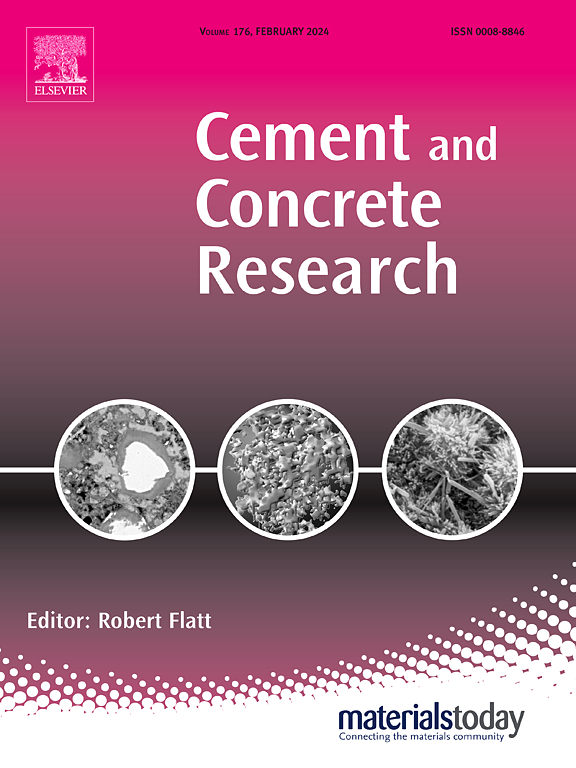养护制度和粘结剂设计对钢渣基碳化加气混凝土(CAC)的影响:达到预水化和碳化之间的平衡
IF 10.9
1区 工程技术
Q1 CONSTRUCTION & BUILDING TECHNOLOGY
引用次数: 0
摘要
碳化加气混凝土(CAC)被认为是传统加气混凝土的低能耗替代品。在本研究中,研究了固化方法和粘结剂设计对CAC性能、微观结构和相演变的影响。一个关键的贡献是确定了预水化和碳酸化之间的平衡,这是强度发展的一个关键因素,但尚未得到充分的研究。研究表明,不充分的预水化会保留多余的水分,阻碍二氧化碳的碳化,而过度的预水化会限制二氧化碳的扩散。提出了两个优化预水化的标准:碳₂S反应程度达到40%和CAC基质平均孔径的稳定。此外,用钢渣代替粘结剂混合物中60% - 80%的粉煤灰,可以提高碳化效率和机械性能,同时保持理想的干密度。这些发现为完善CAC配合比设计和养护策略提供了实用框架,促进了在可持续建筑中的广泛应用。本文章由计算机程序翻译,如有差异,请以英文原文为准。
Effects of curing regimes and binder designs on steel slag-based carbonated aerated concrete (CAC): Reaching a balance between pre-hydration and carbonation
Carbonated aerated concrete (CAC) is recognized as a low-energy alternative to conventional aerated concrete. In this study, the effects of curing methods and binder design on CAC performance, microstructure, and phase evolution are examined. A key contribution is the identification of the balance between pre-hydration and carbonation, a critical yet underexplored factor in strength development. It is demonstrated that insufficient pre-hydration retains excess moisture, hindering C₂S carbonation, while excessive pre-hydration restricts CO₂ diffusion. Two criteria are proposed for optimizing the pre-hydration: the reaction degree of C₂S reaching 40 % and the stabilization of the average pore size of the CAC matrix. Additionally, replacing 60 %–80 % of fly ash with steel slag in the binder mix has been shown to enhance carbonation efficiency and mechanical properties while maintaining a desirable dry density. These findings provide a practical framework for refining CAC mix design and curing strategies, facilitating broader application in sustainable construction.
求助全文
通过发布文献求助,成功后即可免费获取论文全文。
去求助
来源期刊

Cement and Concrete Research
工程技术-材料科学:综合
CiteScore
20.90
自引率
12.30%
发文量
318
审稿时长
53 days
期刊介绍:
Cement and Concrete Research is dedicated to publishing top-notch research on the materials science and engineering of cement, cement composites, mortars, concrete, and related materials incorporating cement or other mineral binders. The journal prioritizes reporting significant findings in research on the properties and performance of cementitious materials. It also covers novel experimental techniques, the latest analytical and modeling methods, examination and diagnosis of actual cement and concrete structures, and the exploration of potential improvements in materials.
 求助内容:
求助内容: 应助结果提醒方式:
应助结果提醒方式:


